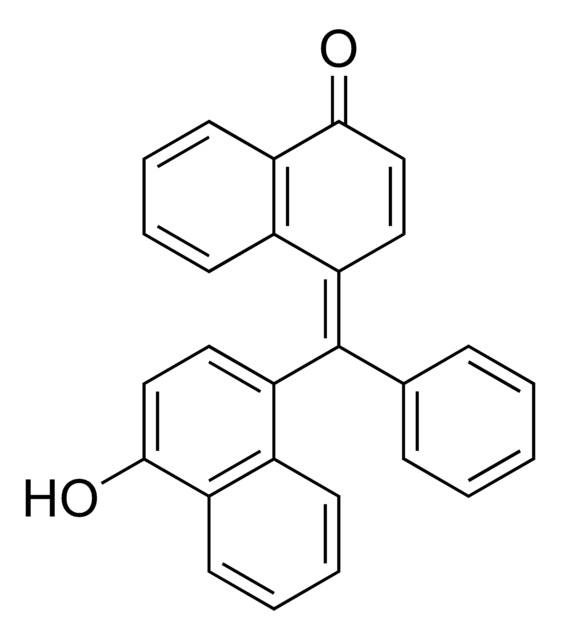おすすめの製品
シグナルワード
Warning
危険有害性情報
危険有害性の分類
Eye Irrit. 2 - Skin Irrit. 2
保管分類コード
5.1B - Oxidizing hazardous materials
WGK
nwg
引火点(°F)
Not applicable
引火点(℃)
Not applicable
適用法令
試験研究用途を考慮した関連法令を主に挙げております。化学物質以外については、一部の情報のみ提供しています。 製品を安全かつ合法的に使用することは、使用者の義務です。最新情報により修正される場合があります。WEBの反映には時間を要することがあるため、適宜SDSをご参照ください。
PRTR
第一種指定化学物質
労働安全衛生法名称等を表示すべき危険物及び有害物
名称等を表示すべき危険物及び有害物
労働安全衛生法名称等を通知すべき危険物及び有害物
名称等を通知すべき危険物及び有害物
Jan Code
24-1060-5-500ML-J:
試験成績書(COA)
製品のロット番号・バッチ番号を入力して、試験成績書(COA) を検索できます。ロット番号・バッチ番号は、製品ラベルに「Lot」または「Batch」に続いて記載されています。
この製品を見ている人はこちらもチェック
John Greenwood et al.
ACS nano, 9(5), 5520-5535 (2015-04-22)
We shine light on the covalent modification of graphite and graphene substrates using diazonium chemistry under ambient conditions. We report on the nature of the chemical modification of these graphitic substrates, the relation between molecular structure and film morphology, and
Martin G Liebensteiner et al.
Science (New York, N.Y.), 340(6128), 85-87 (2013-04-06)
Perchlorate and chlorate anions [(per)chlorate] exist in the environment from natural and anthropogenic sources, where they can serve as electron acceptors for bacteria. We performed growth experiments combined with genomic and proteomic analyses of the hyperthermophile Archaeoglobus fulgidus that show
Dipanwita Das et al.
Journal of the American Chemical Society, 135(10), 4018-4026 (2013-02-28)
Catalytic four-electron reduction of O2 by ferrocene (Fc) and 1,1'-dimethylferrocene (Me2Fc) occurs efficiently with a dinuclear copper(II) complex [Cu(II)2(XYLO)(OH)](2+) (1), where XYLO is a m-xylene-linked bis[(2-(2-pyridyl)ethyl)amine] dinucleating ligand with copper-bridging phenolate moiety], in the presence of perchloric acid (HClO4) in
Dipanwita Das et al.
Journal of the American Chemical Society, 135(7), 2825-2834 (2013-02-12)
Selective two-electron plus two-proton (2e(-)/2H(+)) reduction of O(2) to hydrogen peroxide by ferrocene (Fc) or 1,1'-dimethylferrocene (Me(2)Fc) in the presence of perchloric acid is catalyzed efficiently by a mononuclear copper(II) complex, [Cu(II)(tepa)](2+) (1; tepa = tris[2-(2-pyridyl)ethyl]amine) in acetone. The E(1/2)
Kristiina Cajanus et al.
The journal of pain : official journal of the American Pain Society, 15(12), 1248-1256 (2014-09-23)
Most clinically used opioids are mu-opioid receptor agonists. Therefore, genetic variation of the OPRM1 gene that encodes the mu-opioid receptor is of great interest for understanding pain management. A polymorphism 118A>G (rs1799971) within the OPRM1 gene results in a missense
ライフサイエンス、有機合成、材料科学、クロマトグラフィー、分析など、あらゆる分野の研究に経験のあるメンバーがおります。.
製品に関するお問い合わせはこちら(テクニカルサービス)




